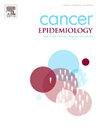意大利的癌症发病率、死亡率和生存估计:方法学方法
IF 2.3
3区 医学
Q3 ONCOLOGY
引用次数: 0
摘要
意大利是世界上人口老龄化最严重的国家之一,其癌症发病率历来存在地域差异,从北向南呈下降趋势。在过去的20年里,由意大利癌症登记网络(AIRTUM)认证的癌症登记处总共覆盖了90% %的意大利人口,旨在提高数据质量,标准化程序,促进研究。本研究提出了用于数据收集、质量控制和分析的方法学方法,以描述意大利三个宏观地区(北部、中部、南部)的癌症发病率、死亡率和生存率的当前模式。还对2025年的发病率和病例数进行了估计。分析了来自34个认可的癌症登记处的数据,包括1981年至2020年的460多万例病例,并详细关注了2008年至2017年期间的300多万例病例。根据ICD-O-3和ICD-10分类收集癌症发病率和死亡率数据,并使用SEERPrep、SEERStat和Joinpoint Regression Program等工具进行统计分析。计算年龄标准化率,并对2013年至2017年的发病率和死亡率趋势进行建模。使用Pohar-Perme方法估计5年累积净生存率,以调整竞争风险。生存趋势按地理区域和癌症部位进行了分析,揭示了癌症结局的地区差异。本文章由计算机程序翻译,如有差异,请以英文原文为准。
Cancer incidence, mortality, and survival estimates in Italy: Methodological approaches
Italy, home to one of the world’s oldest populations, has traditionally shown geographic differences in cancer incidence, with rates decreasing from north to south. The cancer registries that have been accredited by the Italian Cancer Registry Network (AIRTUM), during the last 20 years altogether cover the 90 % of the Italian population, aiming to improve data quality, standardize procedures, and promote research. This study presents the methodological approaches used for data collection, quality control, and analysis to describe current patterns of cancer incidence, mortality, and survival across Italy's three macro-areas (North, Central, South). Estimates of incidence rates and case numbers for 2025 were also produced. Data from 34 accredited cancer registries were analyzed, comprising over 4.6 million cases from 1981 to 2020, with a detailed focus on the 2008–2017 period, which includes over 3 million cases. Cancer incidence and mortality data were collected according to ICD-O-3 and ICD-10 classifications and processed for statistical analysis using tools such as SEERPrep, SEERStat, and the Joinpoint Regression Program. Age-standardized rates were calculated, and incidence and mortality trends from 2013 to 2017 were modeled. Five-year cumulative net survival was estimated using the Pohar-Perme method to adjust for competing risks. Survival trends were analyzed by geographic areas and cancer sites, revealing regional disparities in cancer outcomes.
求助全文
通过发布文献求助,成功后即可免费获取论文全文。
去求助
来源期刊

Cancer Epidemiology
医学-肿瘤学
CiteScore
4.50
自引率
3.80%
发文量
200
审稿时长
39 days
期刊介绍:
Cancer Epidemiology is dedicated to increasing understanding about cancer causes, prevention and control. The scope of the journal embraces all aspects of cancer epidemiology including:
• Descriptive epidemiology
• Studies of risk factors for disease initiation, development and prognosis
• Screening and early detection
• Prevention and control
• Methodological issues
The journal publishes original research articles (full length and short reports), systematic reviews and meta-analyses, editorials, commentaries and letters to the editor commenting on previously published research.
 求助内容:
求助内容: 应助结果提醒方式:
应助结果提醒方式:


